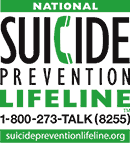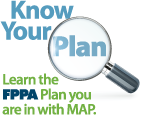Separate Retirement Account (SRA)
Quick Links
How an SRA relates to the following plans:
- Statewide Defined Benefit Plan
- Reentry Members
- Colorado Springs New Hire Pension Plan - Police & Fire Components
Statewide Defined Benefit Plan
The SRA is designed to ensure the long-term stability of the Members’ Benefit Fund while also stabilizing employee and employer contributions to the Statewide Defined Benefit Plan.
Each year the FPPA Board of Directors analyzes the cost of funding benefits of the Statewide Defined Benefit Plan in the previous year compared with total member/employer contributions. If contributions exceed the cost of funding the plan, the FPPA Board may elect to allocate all or any portion of the excess employer contributions to each member’s SRA on a proportional basis.
For example: Assume your base salary is $50,000.00. Both you and your employer contributed $4,000.00 to the Statewide Defined Benefit Plan last year for a total contribution of $8,000.00 (16 percent of base salary). The cost of funding the plan benefits for that year was 15 percent of base salary. Your proportionate share of that cost is 15 percent of $50,000.00 or $7,500.00. The FPPA Board of Directors may allocate any amount up to the remaining 1 percent or $500.00 to your SRA.
Under current law, should the cost of funding the plan benefits ever exceed contributions; the FPPA Board has the option of reducing benefits provided by the statewide plan amendments or reducing the accumulated SRA. The FPPA Board also has the authority to raise the eligible retirement age for normal retirement age to 60, (and vested retirement age to 65), only after eliminating all of the SRA for all active members, and increasing normal retirement age. While the above measures are permitted under the statute, no change in retirement age is anticipated at this time, and at time of publication there is no need to exercise any of the above measures. To date, FPPA has never had to draw back funds from the SRA to fund the Statewide Defined Benefit Plan.
You are not vested in the SRA until you are approved for retirement. All monies existing in your SRA, including interest earned on allocations, are available to you as an additional retirement benefit when you have received approval of your normal, deferred, vested, early, or disability retirement application by FPPA. Please keep in mind, if you enter DROP, your SRA cannot be used to fund the defined benefit plan while participating in DROP, however the SRA is still subject to earnings and losses due to market fluctuations.
Reentry Members
If you were an existing member of a department that re-entered or affiliated with the FPPA Defined Benefit System on or after January 1, 2004 and you chose the Statewide Defined Benefit Plan as your retirement plan, you may also have an additional source of funding for your SRA.
The contribution rate to the Statewide Defined Benefit Plan for this group is set in statute at 20 percent of base pay; however, if the 20 percent contribution rate exceeds what is necessary to fund the defined benefit in any given year, an additional SRA allocation may be made to your account. A separate actuarial review is conducted each year to analyze the cost of the plan for this reentry group. Therefore, members who fall into this category may have two possible funding sources for their SRA.
Colorado Springs New Hire Pension Plan Police & Fire Components
If, in any year, the combined member and employer contributions that are received to fund the plan exceed all the plan costs, the surplus amount of the employer contributions may be allocated to an SRA in each member’s name. The SRA balance, if any, is available at the time of electing a normal, early or vested retirement. The SRA will have earnings and losses posted on a monthly basis. The SRA allocation will vary from year to year based on the cost of the plan from the previous year.
SRA Payment Options
Various payment options are available for your SRA. As a retired member, you could choose any one or a combination of the following:
- Lump sum payment;
- Monthly periodic payments designating an amount of time, or designating a dollar amount that is to be payable until the account is exhausted;
- Convert all or a portion of your account to a monthly lifetime benefit. (The same benefit payment option that you chose for your defined benefit plan will apply to this monthly lifetime benefit. The same cost-of-living adjustment that is applied to your defined benefit plan will also apply. If you want to convert all or a portion of your SRA to a monthly lifetime benefit, you must make this decision at the time you retire or exit DROP, whichever is later.)
- An annuity offered outside of FPPA.
You can choose to defer receiving your SRA to as late as April 1st of the calendar year following the year in which you turn 70 1/2. If you elect to receive the SRA immediately upon retirement, actual distribution of your SRA funds normally occurs as soon as 60 days following FPPA approval of your retirement application. Any unpaid balance in the SRA will continue to accrue earnings until the account is exhausted. If you choose to receive monthly periodic payments from your SRA, any unpaid balance will continue to accrue earnings.
A refund of your contributions prior to retirement results in a forfeiture of your SRA.
Per FPPA Rule 310.09, if you die as an active member, your SRA balance shall be paid to your surviving spouse and/or dependent child(ren). If your spouse and dependent children do not live in the same household, one-half of the benefit shall be paid to the spouse and the other one-half shall be paid in equal parts to the dependent children.
If there is no spouse or dependent children and you were a vested member at the time of death, the SRA shall be paid to your designated beneficiary or if there is no beneficiary the SRA is paid to your estate in a lump sum.
The surviving spouse, dependent child or designated beneficiary may elect a payment option as listed above.
SRA Investment Options
While the member is active, the SRA is invested in the Fire and Police Member’s Benefit Investment Fund and shall accrue earnings accordingly. At retirement or entry into DROP, a member may transfer the balance of his or her SRA to the Fire and Police Member’s Self Directed Investment Fund currently held at Fidelity Investments, in order to self-direct the investment of those funds.
Keep in mind the following provisions with respect to the SRA.
- The election to move the SRA funds to the self-directed plan shall be irrevocable, and the funds may not later be moved back to the Fire and Police Member’s Benefit Investment Fund.
- While members participating in DROP may elect to self-direct the investment of the SRA, no SRA distribution can take place until the member has separated from service.
- At any point you elect to receive periodic payments from the SRA, the unpaid balance of the SRA will be moved to the Fire and Police Member’s Self Directed Investment Fund prior to beginning those payments and you will be responsible for selecting your investment options.
Questions?
General Benefit Questions: generalbenefits@fppaco.org
General Retiree Questions: retireepayroll@fppaco.org
The plan documents, statutes, and rules and regulations provided on this web site are provided as an informational service for our members' convenience. While we have taken steps to insure their accuracy, this information should not be relied upon as an official statement of the referenced document. If you desire a copy of the official version of any document, please contact us.
Governing Board
Governing Documents
FPPA
- About FPPA
- Address & Directions
- Contact Us
- Employment Opportunities
- FPPA Overview
- Glossary of FPPA Terms
- News and Video
- Organizational Chart
- Our Vision & Mission Statement
- Participating Employers (This link will direct you to the Annual Report | Statistical Section.)
- Public Records
- RFP

National Suicide Prevention Lifeline
Are you in a crisis? Struggling emotionally and need to talk to someone?
Call the National Suicide Prevention Lifeline or chat online.
It's free and confidential.
(800) 273-TALK (8255) • suicidepreventionlifeline.org
